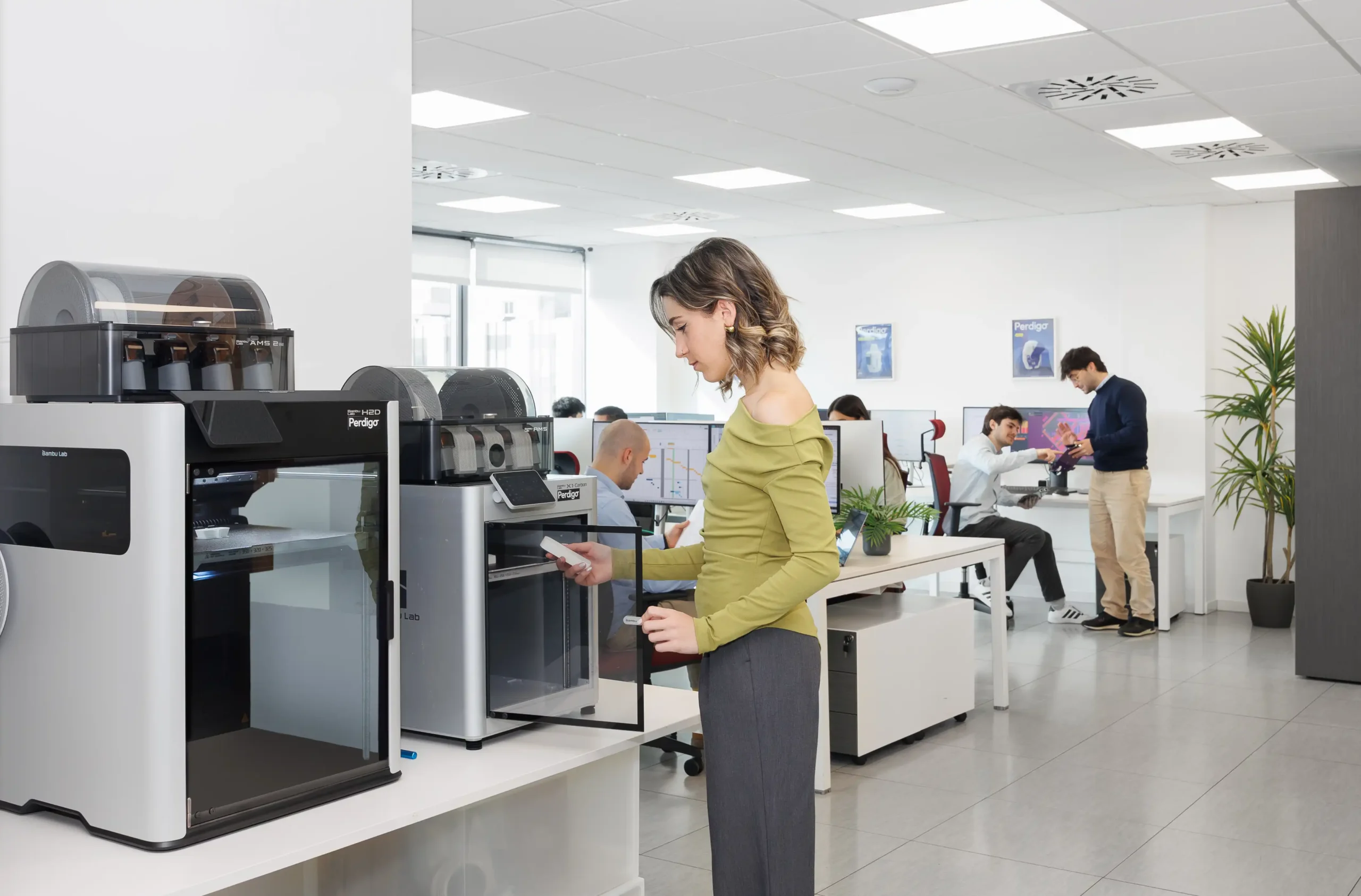
Prototyping
Concepts
When creating initial product mock-ups and interviewing users during formative usability evaluations, fast and inexpensive prototype iterations are essential.
Artistic sketches and professional 3D renderings are very useful to convey the future product feel. To produce physical prototypes, Perdigó uses in-house FDM 3D printers in addition to hand-crafted models.


Technology demonstrators
Proving the technical viability of the core working principle of a novel device in a functional prototype is often essential for de-risking subsequent project phases. These prototypes rarely fit the desired product form factor, as they are constructed using readily available Development Kits (DK) and standard components, combined with bespoke technical prototype parts.
Perdigó employs precise SLA 3D printing and post-processing machines in its prototyping laboratory, alongside reliable partners for machining and specialist fabrication processes, to produce these prototypes.
Detailed Design
Functional prototypes meet lookalike mock-ups during this phase, where the devil is in the detail! Prototype quality and interaction cycle time are critical. Perdigó relies on a network of trusted suppliers for PCB fabrication, component machining, SLS 3D printing, and many more prototyping techniques, all of which come together in the testing lab.


Industrialisation, Verification and Validation
Equivalent manufacturing and assembly processes of commercial production are used to obtain representative prototypes for testing. These are used for Verification and Validation of the different processes (e.g. sterilisation), device safety, performance and summative usability evaluation.
Many of the devices Perdigó engineers are built from injection-moulded components, electronic Printed Circuit Boards (PCB), and other bespoke components (e.g. metal sheet, springs, filters, or connectors).